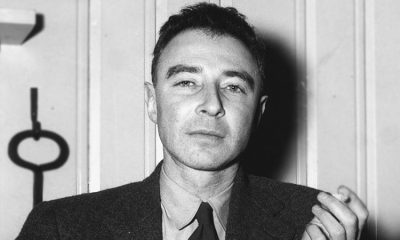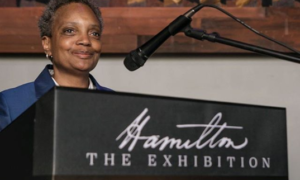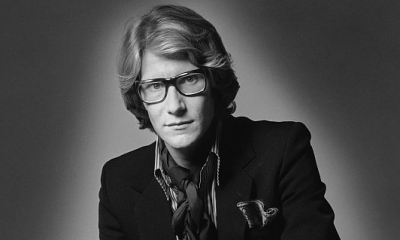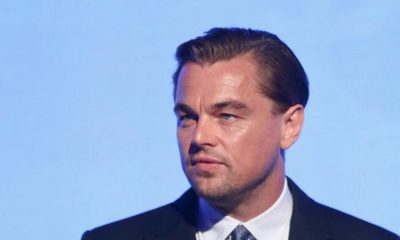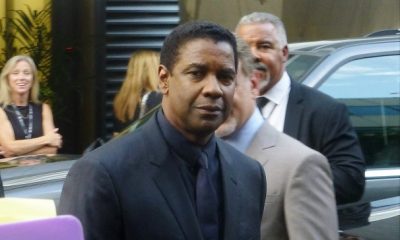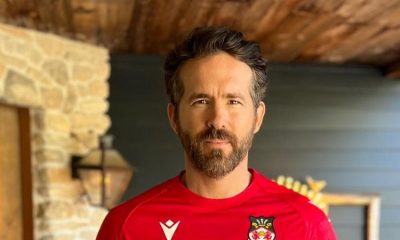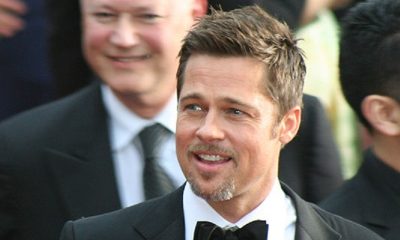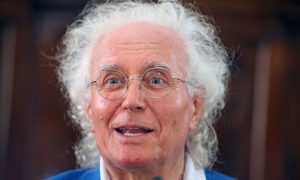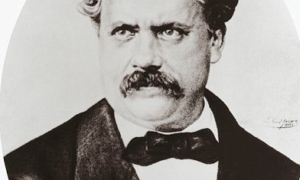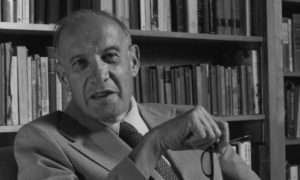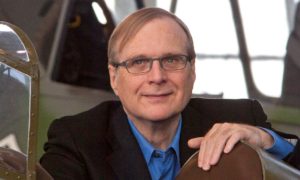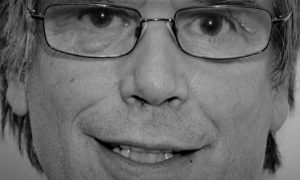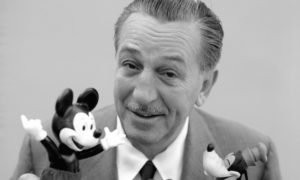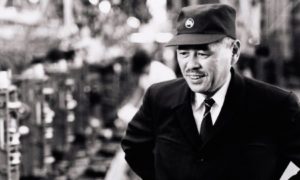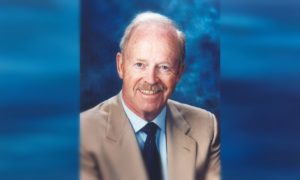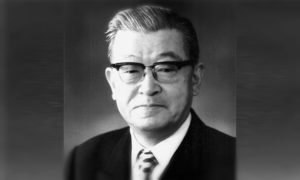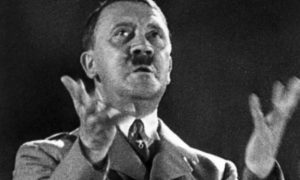Inventors
Thomas Alva Edison
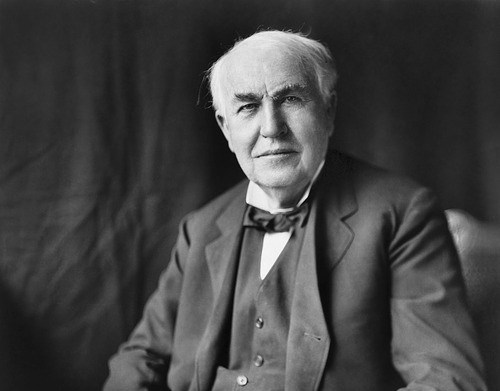
Thomas Alva Edison Biography
Thomas Alva Edison was an American inventor and entrepreneur who created thousands of inventions which he managed to patent in Europe and the United States. He was born in the United States on February 11, 1847, in the town of Milan, Ohio. Thomas was the son of Samuel Ogden Edison, Jr. of Dutch ascendance and Nancy Matthews Elliott of Scottish ascendance.
Edison would begin his schooling in 1855 at the age of 8. During the first months, he tried to drop out of the school because one of his professors treated him as an unproductive and not very capable kid in his academic work. However, what really happened was that the great intelligence of Edison made him collide with the monotony of the school.
In 1859, when he was 12, he wanted to start earning money, so he started selling newspapers, butter, vegetables and blackberries on the train that ran from Port Huron to Detroit. The money he collected for sales, he would use it to buy scientific journals, books, and materials that he used to learn from and experience new things. He managed to learn to telegraph and that motivated him to get a used printing press to produce his own newspaper, which he called “Weekly Herald.”
Sometime later, Thomas Edison was in several cities working as a telegrapher in several companies and in his free time he would conduct researches. Edison achieved a perfection of the automatic telegraph, invented an apparatus that transmitted the oscillations of stock values, contributed ideas in the construction of the first typewriter and perfected the telephone by means of the use of the carbon microphone.
At the end of 1871 Edison would get married, so he bought a piece of land in the village of Menlo Park that was near New York, which he devoted largely to the construction of his workshop and the remaining part for a home family. Thanks to his great capacity of work, in those years Thomas Edison concentrated in the creation of a new object to record the sound vibrations and although it was already invented, Edison wanted to improve that idea and make of it something much better. It was then in August 1877 when he finished one of his sketches and gave it to one of his technicians to start making it. When Thomas connected the machine, he realized that he could perfectly hear a song that one of his employees had sung a few minutes ago. This test would end the invention of the phonograph, one of Edison’s greatest inventions.
After the invention of the phonograph, Thomas Edison began researching on the electric light in April 1879. Although he was credited with the invention of the incandescent lamp, Edison really only perfected it by initially finding that the problem of lamps at that time was finding a material that was able to keep the light of a light bulb on for a long time since he had tried with different materials without finding the expected result, until finally, he tried with the carbonized bamboo filament which had the necessary characteristics to keep the bulb lit by longer time.
On October 21, 1879, Edison would make the first bulb with the capacity to be on for 48 hours straight. Thanks to this perfection, Thomas Edison began to manufacture bulbs in large quantities, which he sold at a lower price than the production cost was, in order to increase the demand for light bulbs and reduce the costs per unit of them. This would give great results since at the end of that year the first lighting system built by Edison was put into operation in Menlo Park, which had 53 bulbs.
In 1880, Thomas would continue to grow as he achieved a partnership with J. P. Morgan to found the company Edison Electric.
On a scientific level, Thomas Edison discovered the so-called Edison effect in the year 1883, which consisted in the passage of electricity from a filament to a metal plate that was inside the bulb of an incandescent lamp.
Around 1889, Edison made a contribution to the world of cinema selling celluloid film in a 35-millimeter format, and although he could not patent his idea because George Eastman had made a film in this format years before, he could patent the lateral perforations that kind of movie had.
Two years later, in 1891, he invented the Kinetoscope Parlor, which was a rudimentary film machine composed of a mechanism to ensure the intermittent motion of the film. Three years after that, in Broadway, New York, Edison opened the Kinetoscope, where a single person could sit to look through a peephole that was in a wooden cabin, it was illuminated from the back by an electric lamp.
On October 18, 1931, Thomas Edison died in West Orange, New Jersey due to arteriosclerosis. In honor of this great inventor, the day of his funeral the lights went out for a minute in several cities of the United States.

Inventions
Emil Berliner
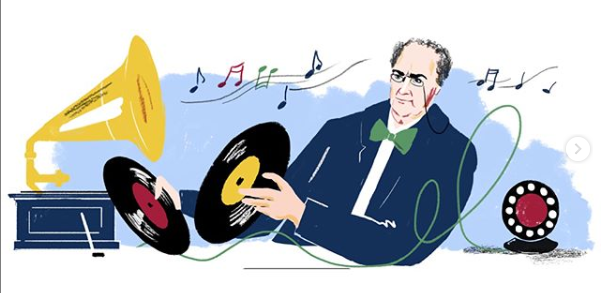
Emil Berliner Biography
Emil Berliner (May 20, 1851 – August 3, 1929) inventor. He was born in Hannover, Germany. He grew up in a Jewish environment. Due to a complex economic situation, he had to work to help his parents from a young age, so he did not attend school regularly. His first paid job was as a painter, for later, at age 16, to enter as a clerk in a food store.
According to his experience, he began to be interested in the production methods of the factory where he worked. He was a very versatile man since he built a weaving machine that improved existing ones; It was one of the many inventions of German. In 1869, when a system of repression against Jewish families was installed, Berliner obtained a position in a company located in Washington, United States. The family raised the money needed to support his trip and, especially, to prevent his son from being sent to the army ranks. Then, Emil settled in New York with the idea of finding a job. He returned to Washington. Despite the economic difficulties, he studied at the Cooper Institute electricity and physics.
Motivated by scientists who were researching about the conversion of sound into electrical impulses that could be transmitted on wires; Berliner experimented with the electrical transmission of sound. Thanks to his research he was granted an assistant position of Dr. Constantine Fahlberg in his prestigious chemical laboratory. Soon he invented two electrical mechanisms that reproduced the sound more authentically and made it transmissible in the distance.
The responsibility for creating the prototypes of the microphone and the transformer was Berliner, the two basic mechanisms for electronic communication, in addition to building a carbon transmitter microphone and an iron diagram transmitter. It is clear that sometimes his inventions were inconvenient, but Berliner managed to solve these problems. Occasionally, he used objects that had not previously been used or integrated into an invention.
It was based on the telephone number of Reiss and Antonio Meucci and from there make some progress. Besides, he powered the device invented by Alexander Graham Bell. In this way, Berliner is identified as the inventor of the modern telephone. Berliner offered his invention to the subsidiary of the Bell Company in New York, the offer was finalized in the year of 1878 for $ 50,000. It was not long before the conflict with the Western Union arrived over the patent of the invention, the American courts appealed in favor of Berliner.
In 1881, together with his brother Joseph, he founded the Telephone-Fabrik Berliner, with branches in Vienna, Berlin, Budapest, London, and Paris. Later, he returned to Washington in 1883, where he advanced his independent research on the mechanical reproduction of sound. Berliner created new reproduction materials to improve his invention. One of his most significant contributions was the improvement of the phonograph, the first was patented in 1877.
I create a record player baptized gramophone, with a needle system that would be hegemonic until the end of the 20th century. In 1887 he patented his invention. A year later, the Franklin Institute in Philadelphia awarded him the Scott Medal for his contribution to the development of acoustics and sound reproduction. With collaboration, he founded the United States Gramophone Company in 1893; In 1897 he created the Berliner Gramophone Company in Montreal. He quickly arrived in Europe: he opened the Deutsche Gramaphon Gesellschaft and Britain’s Gramophone Co.
We must indicate that Berliner worked in other areas such as aeronautics. Then, he was the first to use a light internal combustion engine. His work was very important because years later he joined the airplanes. His son, Henry Berliner, designed a helicopter that flew successfully in early 1919. His interest in the problems of sound reproduction was greater, which is why he strove to create acoustic tiles for use in auditoriums and concert halls. His contribution was recognized in 1913 and he was awarded the Elliot Cresson Medal in recognition of his scientific contribution to telephony and acoustics. He died on August 3, 1929, as a result of a heart attack.
WORKS
- Conclusions
- The Milk Question and Mortality Among Children Here and in Germany: An Observation
- Some Neglected Essentials in the Fight against Consumption
- A Study Towards the Solution of Industrial Problems in the New Zionist Commonwealth
- Muddy Jim and other rhymes: 12 illustrated health jingles for children
Companies
Sergey Brin

Sergey Brin biography
Sergei Brin (August 21, 1973) computer scientist and creator of the Internet search engine Google. He was born in Moscow, Soviet Union. Sergei Brin was born into a Jewish family that enjoyed a well-off position but due to their religious beliefs, the Russian government prevented them from certain possibilities. His father, Mikhail Brin, was a mathematician, and his mother, Eugenia Brin, worked in the field of science when Sergei was six years old they decided to move to the United States to find better living conditions.
When they arrived, their mother landed a major position in NASA’s Goddard Space Flight Center, and her father obtained a position as professor of Mathematics at the University of Maryland, she also decided to change her name, due to North American anti-communist policies, Michael Brin. He entered to study at the Paint Branch Montessori School. His parents were very attentive in the education of his son, who demonstrated a great ability for mathematics. Throughout his school years, he was a student with excellent grades.
Upon graduation, he enrolled at the University of Maryland to study Mathematics and Computer Science. In the stipulated time, 1993, he received his degree with honors and applied for a grant from the National Science Foundation. He began his postgraduate studies at Stanford University. Simultaneously, he started working at Wolfram Research, the creator of Mathematica. While in the winter of 1998, he began to develop an idea to create a search engine for the internet, the idea was developed with the help of Larry Page. His great motivation was the inefficiency and the multiple errors of the search engines existing at that time.
They held several meetings with brilliant people in this field, and they met Andy Bechtolsheim, an investor from Sun Microsystems. They decided to present their idea, they also made a quick demonstration and they got that, without thinking twice, Bechtolsheim extended a check worth 100,000 dollars to start the project. Although with this amount achieved only the beginning of the project, the young people full of enthusiasm began to get other economic support and various sources of income. As a result, Brin and Page managed to get two of the most relevant US venture capital firms, Kleiner Perkins Caufield & Byers and Sequoia Capital, to agree to finance their idea. They then collected 25 million dollars. The project was still ongoing.
At first, they thought of the word googol to baptize their search engine, a term invented by the mathematician Edward Kasner to name the number 1 followed by 100 zeros. Then they changed their name to Google. We must mention that Yahoo! played an essential role in driving Google. Yahoo! collaborated encouraging the creation of his own search engine, the pair of colleagues began to offer in its popular portal the possibility of searching through that engine. For the year 2003, Google swept daily searches, had about 112 million, compared to Yahoo !, which only supported approximately 42 million.
The reason was that Google was more effective, its presentation was much more attractive, and allowed more fixed searches. Brin and Page decided to add new possibilities to the dozen functions related to their search engine and the continuous experimentation with many others. Something really innovative was that Google allowed the users to easily locate images, newsgroups and searches using the Open Directory thematic directory tool, an international volunteer project that catalogs web pages by hand.
After a few years, thanks to the popularity of Google, colleagues received a Webby, a prize. Google was inserting new services every time, such as the search engine of products on sale in the Google network; the product search within mail order catalogs; a language translator, among other new features. When the new millennium began Google began to think about the modification and restructuring of its building located in the Californian region of Mountain View, more than a hundred employees worked in an unusual environment.
So they adopted as a philosophy: to offer a pleasant place to work and with that to motivate and retain employees. Among the renovations are yoga classes, massages, bars, free ice cream machines, food prepared with organic food by two chefs, a ping-pong table, swimming pool, two pianos, and hockey meetings twice a week. The goal of Google at that time was especially to create better search engines, extract information from unstructured sources and databases of long collections of text and scientific information.
Brin has authored more than a dozen articles in top-level academic journals and has also been a lecturer in various international academic forums, most of them are business and technology, in 2002, Brin was proclaimed “Young Innovator Who Will Create the Future” by Technology magazine Review This publication was edited by the prestigious Massachusetts Institute of Technology (MIT). What this couple achieved, especially at Brin’s initiative, was impressive. At present everyone knows and has used Google.
Although it has been censored by some countries of totalitarian politics like China. According to computer experts, Google is “the saving medicine” for most Internet users. One of its characteristics is the speed and effectiveness. Now, its design is simple and direct, and without incorporating advertising in its pages that generate distraction in the users. We must accept that, Internet users have preferred this search engine to the detriment of other, earlier, more popular ones. Brin has advanced several projects, along with Larry Page, who are looking for ways to solve the problem of global energy and environmental hazards through Google’s philanthropic area called Google.org.
Companies
Mark Zuckerberg
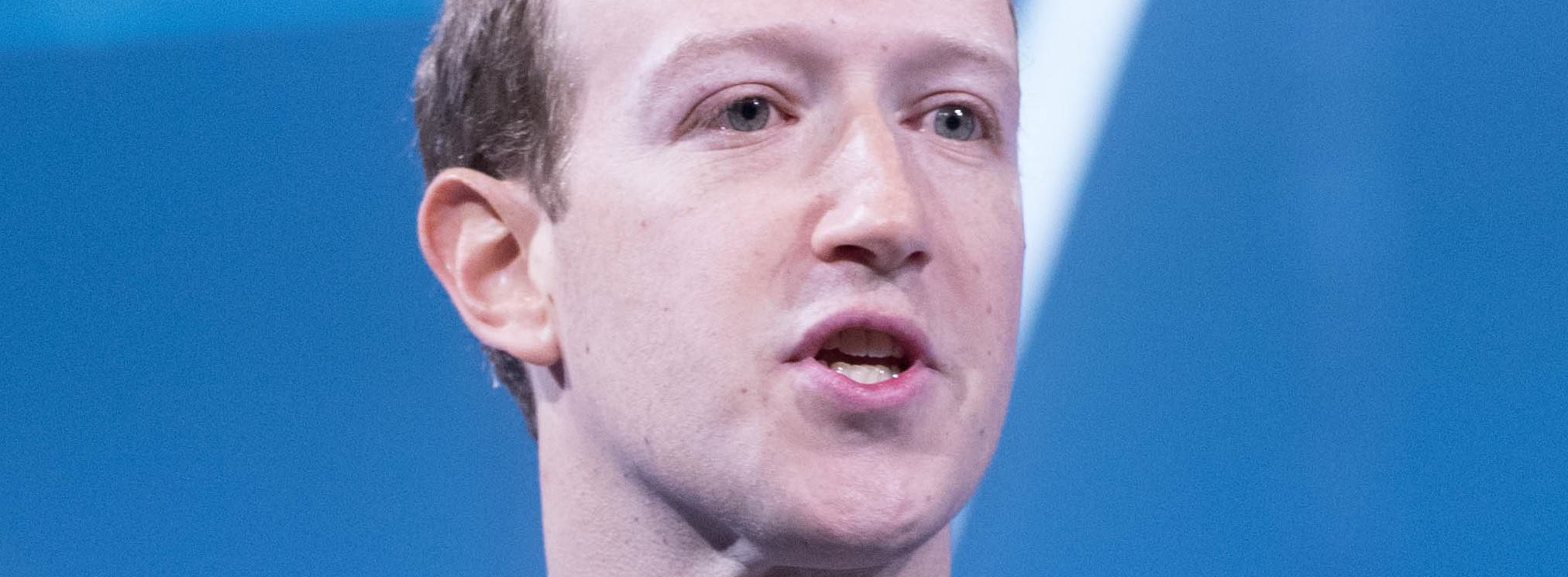
Mark Zuckerberg biography
Mark Zuckerberg (May 14, 1984) programmer and entrepreneur, creator of Facebook. His birth name is Mark Elliot Zuckerberg. He was born in White Plains, United States. His father, Edward Zuckerberg, served as a dentist, and his mother, Karen Kempner, was a psychiatrist. Most of his life was raised in a small village in Westchester County Dobbs: Ferry, New York. His family raised him under the Jewish religion, he had his Bar Mitzvah at 13 years old. Studied at Ardsley High School, Zuckerberg was an outstanding student.
His parents saw that the young man needed a higher quality education, so they took him to Phillips Exeter Academy, an exclusive private school in New Hampshire, where thanks to his good performance and love of numbers he won prizes in mathematics, astronomy, physics, and classical studies. One of the things he enjoyed most was attending the Johns Hopkins Center for Talented Youth summer camp, this was a key place where Zuckerberg could give free rein to his imagination, curiosity, and wit. Zuckerberg could read and write French, Hebrew, Latin, and ancient Greek.
Another of his hobbies was training to fence and he was the team leader. At the age of 18, he undertook a computer project with a friend named Adam D’Angelo, former technical head of Facebook, the project was called Synapse Media Player. The program was very successful because it had the purpose of reproducing music, as well as providing certain tools such as preference, and previous selections, which made it easier for the user to navigate it.
When they began to see the popularity of the program and the good results, important software companies such as Microsoft or Apple, sought to acquire the rights, but finally, nothing came of it. Mark independently decided to upload his application to the network, so that users can download it for free. Zuckerberg had the support of several outstanding engineers of the University of Harvard, some of the personages who helped him were Eduardo Saverin, Dustin Moskovitz, and Chris Hughes.
The first was the coordinator of computer science, the others were his roommates. In 2002 he entered Harvard University. Two years later, with the help of some colleagues, he launched a new website: the social network Facebook. One of the most famous social networks worldwide today. We must mention that Facebook emerged with the initial intention of creating a connection network among students at Harvard University. The name of the website was inspired by a newsletter that many universities give their new students to meet with other students within the campus.
Mark took as a priority that Facebook allowed to add friends, with whom you could exchange photos and messages, create groups of friends. Each user had a “wall” to allow friends to write messages. Then several modifications were made to the website. In a short time, Facebook went viral and very popular among university students. In just two weeks, two-thirds of Harvard students had registered on Facebook, and in just a few months several students from other universities created their user. After a while, Mark Zuckerberg took the opportunity to move to Palo Alto, California, with the intention of founding his first office.
The young man had to leave the university because Facebook needed his full attention. This idea soon reached companies and colleges. In the face of success, the programmer decided to expand its services to the general public. In 2006 Facebook had become a worldwide phenomenon, only in countries such as Canada, the United Kingdom, and the United States, it had about 64 million users. This is also because Facebook was only available in English. For 2008 Facebook diversified and hosted several languages, including French, German and Spanish. After that, its popularity and users grew as foam.
In 2007 Forbes magazine published the ranking of the 25 most influential people on the Internet. Zuckerberg, as chief executive of the site, clearly made part of the list. One of his biggest achievements was selling 256 percent of the 1.6 percent portal to Microsoft for 256 million euros. In 2008 Zuckerberg made part of the 1,125 richest men in the world according to Forbes. And also one of the youngest wealthy. His offices in 2008 already occupied four buildings and had about 400 employees. Both Viacom and Yahoo! were interested in buying shares on Facebook.
His higher income came from his contract with Microsoft on advertising. One of his great competitions, in the beginning, was MySpace, a property of News Corp, the empire of Rupert Murdoch. But Facebook quickly grew three times faster than its rival. But after being at this point of fame and important, Researchers from their colleagues who initially collaborated in the creation of Facebook decided to take legal action stating that Zuckerberg had “seized the idea.”
The creator of Facebook has great philanthropic inclinations. He joined the campaign The Giving Pledge, an initiative commanded by billionaires Bill Gates and Warren Buffett that seeks that the great magnates donate half of their fortunes to philanthropic causes.
Time magazine mentioned him as the character of the year, and Hollywood took the opportunity to launch a biopic about a 26-year-old character: The Social Network (2010), based on the book by Ben Mezrich Billionaires by accident under the direction of David Fincher. In 2012 Mark Zuckerberg married Priscilla Chan. In 2015, Max was born, the couple’s first child. Currently, he appears in the list of billionaires of Forbes magazine, with a fortune valued at US $ 63.3 billion, ranking number five among the richest in the world.
Business
Elon Musk
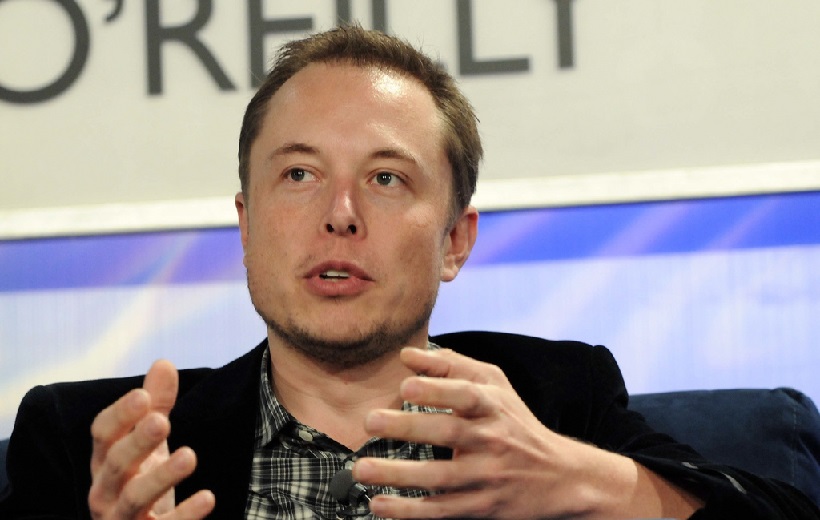
Elon Musk biography
Elon Reeve Musk was born on the 28th of June of 1972 in Pretoria, South Africa. He is known for being one of the founders of Paypal, SpaceX, Tesla Motors, OpenAl, and Hyperloop, among other companies. The entrepreneur and inventor appears in the list of the richest in the world, occupying the position number 56, in 2017, with 17.4 billion dollars. Forbes magazine, for the December 2016 publication, named him the 21st person with the most power in the world. His greatest goal, according to Musk, is to change humanity drastically; for this purpose, he works in SolarCity, SpaceX, and Tesla. One of his interests is the abandonment of petroleum fuels in order to reduce global warming. Perhaps Elon’s most ambitious project, so far, is the establishment of a human colony on Mars, with nearly a million people.
He spent his childhood in South Africa with his parents, an engineer from South Africa and a nutritionist from Canada. At age 10, with his first computer, a Commodore VIC-20, he began to learn to programme on his own. Two years later he sold his first videogame called Blastar for about $ 200. At that time he went through difficult times; his schoolmates subjected him to bullying because of his uncommon interests for them. Elon spent his money on science fiction books, comics, and video games.
In the period between 12 and 15 years of age, he entered into an existential crisis influenced by the readings of Nietzsche and Schopenhauer. The situation went to the extreme of taking him to the hospital because of beatings by his companions. In his home things were not better, the relationship with his father was quite complicated. He suffered the emotional violence of a father unable to understand him. Compulsory military service bothered him. For these reasons, at age 17, after graduating from high school in Pretoria, he decided to leave South Africa and take refuge with his mother in Canada.
What Musk wanted most was to reach the United States. He found in that country a way to make possible everything he imagined. Elon’s father conditioned his support: he would not pay for a university outside of South Africa. In 1989, while in Canada, he found a chance to study thanks to his maternal relatives, who came from North America. By 1992, Elon counted on a scholarship in the University of Pennsylvania. The young entrepreneur began his studies in Business Administration, in parallel he began his career in Physics. He was fortunate to have the support of one of his teachers, who turned out to be the executive director of Los Gatos, a company located in the southern part of San Francisco Bay, California. The experience gained on ultracapacitors in that company, and then in Pinnacle Research, along with the inspiration it had for inventors such as Nikola Tesla, made him define the fields in which he would focus on the future: renewable energy, the Internet and outer space.
The beginning on the Internet began with Zip2, in 1995, along with his brother Kimbal Musk and a friend named Greg Curry. The company was dedicated to the development and maintenance of web pages dedicated to the media. The idea was a success, managing around 200 sites on the Internet in the year of 1999. For that year the company was sold to Compaq for 300 million dollars; money that would help him found X.com. The next plan was to systematize payments and money management through the Internet, offering security and speed. The ease offered by X.com and security made the project a very profitable idea, as well as merging, in 2000, with Confinity; company that provided a similar service, but only between Palm Pilot devices. In 2001 X.com decided to change its name to Paypal.inc a well-known company that provides the service to make online payments internationally.
With the growing success, problems soon appeared. Different companies tried to close Paypal, including eBay, which ended up buying it in October 2002, for 1.5 billion dollars. The sale of Paypal gave way to the creation, by its former members, of companies such as LinkedIn and YouTube. The next Musk project was called Tesla Motors, the company that created the first functional electric car. The main investment in Tesla was solar energy. The idea was born in 2003 in the company AC Propulsion, which had a prototype electric car. Musk wanted to help design a sports car with the same base of AC Propulsion.
In 2004, along with Matt Tappenhig and Martin Eberhard, Tesla Motors was created, with the intention of mass producing the model T-Zero of AC Propulsion. Musk invested nearly 98% of the capital. The start of the company was hard; the budget for the first models exceeded what was expected, but they managed to sell enough to continue developing models. For 2012, 2100 Tesla Roadster was sold in different countries. In 2015 the Tesla Model X was launched, designed to cover all types of terrain.
Another of Musk’s three projects involves SpaceX. Thinking of establishing a colony on Mars, he began, in 2002, to investigate how to send a rocket to Mars. His initial idea was to obtain reusable rockets to carry out the two trips for reconnaissance missions. For that year, Space Exploration Technologies was founded, focused on launching rockets and reducing fuel costs and materials for launch with increases in viability. In 2008, an agreement was made between NASA for twelve rocket flights. Currently, SpaceX is responsible for the development of Falcon rockets, which use liquid fuel.
History
Archimedes

Archimedes biography
Archimedes of Syracuse considered one of the most transcendental scientists of ancient age. The Greek physicist, mathematician, astronomer, engineer and inventor from Syracuse was born in Sicily, around the year 287 b.C. and died around 212 b.C. with approximately 75 years of age. He is attributed to the greatest importance for his scientific work in ancient Greece and classical times.
WHO WAS AND WHAT DID ARCHIMEDES?
Their contributions are given in the statics and hydrostatics, laying the foundations of these. The various machines he invented are fundamental, such as the Archimedes screw, or the Lever. He created siege weapons based on the basis of his other inventions. His contributions in the field of mathematics position him as the greatest in antiquity. He managed to give an almost precise approximation on the Pi. He calculated the area of a parabola using the exhaustive method.
His death is due to the unrest in the Second Punic War. The Roman Republic, under the direction of Marco Claudio Marcelo, besieged Siracusa between the years 214 and 212 b.C. A soldier killed the mathematician. There was an order that protected him, but it was ignored. In the year 530 b.C., the first compilation of his mathematical writings was created. It was made by Isidoro, a Greek from Miletus. The work of the mathematician has been of great importance for the Renaissance period and few copies are available so far. The Palimpsest of Archimedes turns out to be the key to understanding how he managed to reach the knowledge he possessed.
Archimedes was born in Syracuse of Magna Graecia, in Sicily, Italy. Juan Tzetzes, taking the date of his death, deduced that he lived around 75 years. His father was Phidias, an astronomer, whose name appears in The Spotted Sand, a corrupt passage that receives the Greek name of ψαμμίτης. The biography that was written about Archimedes was in charge of Heracleides, unfortunately, it was lost, and with it the details of the mathematician’s life. Plutarch related it to Hiero II, but the tyrant of Syracuse may or may not have been really related to Archimedes.
It is not known if he had offspring, nor is his genealogy necessary. It is said that part of their knowledge was acquired in Egypt, Alexandria. Diodoro Sículo corroborated it; in youth, Archimedes visited that city, his work thus refers to scientists who came from those lands. The references given by Polibio, Livy, and Plutarch, on the machines invented by Archimedes, speak of the panic felt by the Romans during the siege of Syracuse. The defender of the city acted as a true engineer of the war.
After the death of Archimedes, Marcelo was deeply upset because of the loss of a great mathematician. The reasons are not very clear. Plutarch established three possible versions of death. The first emphasizes arrogance; with which, the mathematician refuses to abandon the problem he was working on and refuses to see Marcelo. The soldier saw no option but to kill him. The second that speaks of his love for mathematics, by asking the soldier more time to solve the problem he had at that moment, and by refusing, the soldier killed him. The third speaks of how the soldier murdered Archimedes thinking that the mathematical tools he carried were of great value. Tito Livio delivered a version in which the circumstances are a bit impartial; the soldier found the mathematician on his back and decides to kill him without knowing who he was.
The tomb had a circle engraved inside a cylindrical figure. The descriptions are given by Cicero, who visited the tomb. Such inscription refers to the discovery of the volume of the spheres. The area and volume, according to the studies of Archimedes, correspond to two-thirds of the cylinder. Cicero said that, despite the difficulties, he found the grave. It is situated at the door of Agrigento, a city of Italy, in Syracuse. The tomb was neglected and covered by dust and shrubs. When he cleaned it, he discovered the inscription and the various verses written there.
The story about how to calculate the volume of irregular objects involves Hiero II. H thought that goldsmiths could use silver in their gold orders. Archimedes thought about the use of water when remembering the behavior of it. While in the bathtub, he noticed the water level as he sank his body. In this way, by inserting a crown into the water, you would avoid melting it. He thought about calculating the displaced water with the volume of the crown and thus calculate the density. This calculation, if it was less than that of gold, would demonstrate the use of other metals. Such a story is questioned because of the exacting details of the method. Another possible method for the calculation is electrostatics. The behavior of the water causes that every submerged object, by its own weight, emerges. Using a scale, a piece of gold similar in weight; and on the other side the crown. By submerging both objects he would see the displacement of water.
